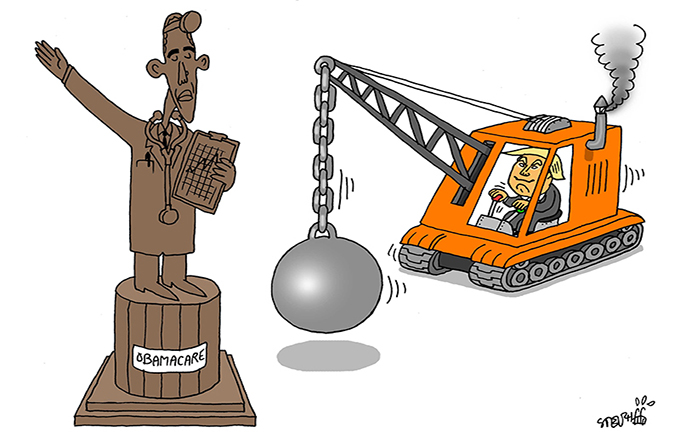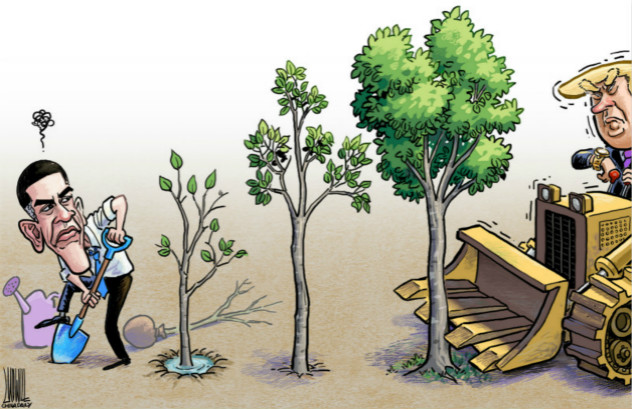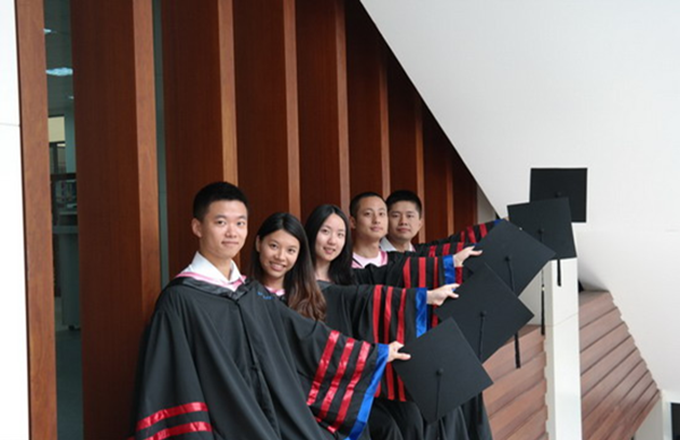China's policies on Asia-Pacific security cooperation
III. China's Relations with Other Major Asia-Pacific Countries
1. China-US Relations
Since 2015 the overall relationship between China and the United States has remained stable and even made new progress. The two countries have maintained close contacts at the leadership and other levels. President Xi Jinping paid a state visit to the US at the invitation of President Barack Obama in September 2015, and met him again during the UN Climate Change Conference in Paris in November of the same year. In late March 2016 the two presidents had a successful meeting during the Nuclear Security Summit in Washington. In September they met again during the G20 Hangzhou Summit, and committed themselves to building a new model of a major-country relationship. Premier Li Keqiang met President Obama when attending high-level meetings of the 71st Session of the UN General Assembly. In June the same year the Eighth Round of the China-US Strategic and Economic Dialogue, the Seventh China-US High-Level Consultation on People-to-People Exchanges, and the Second China-US High-Level Joint Dialogue on Cybercrime and Related Issues were held in Beijing, and achieved fruitful results. In addition, the two countries have made steady progress in practical cooperation in various fields, and maintained close communication and coordination on major regional and global issues like climate change, the Korean and Iranian nuclear issues, Syria, and Afghanistan.
The two countries have maintained communication and coordination in the field of Asia-Pacific affairs through bilateral exchanges and relevant mechanisms at all levels, and agreed to build a bilateral relationship of positive interaction and inclusive cooperation in the region. The two countries have stayed in a state of communication and cooperation on regional and global affairs, including climate change, counter-terrorism, marine environmental protection, combating wild life smuggling, and disaster prevention and reduction within multilateral frameworks such as APEC, East Asia Summit (EAS), and ASEAN Regional Forum (ARF). Moreover, the two sides have smoothly carried out trilateral personnel and agriculture training cooperation projects in Afghanistan and Timor-Leste.
China-US military relations have generally maintained a momentum of steady progress. Since 2015 the two militaries have continued to improve their two mutual-confidence-building mechanisms: the Mutual Notification of Major Military Activities and the Rules of Behavior for the Safety of Air and Maritime Encounters. In 2015 they held their Joint Humanitarian Assistance and Disaster-Relief Field Exercise and Disaster Management Exchanges in China and the US, respectively, and participated in Khaan Quest 2015 multinational peacekeeping military exercise and Exercise Kowari, a China-US-Australia trilateral military exercise. In January 2016 a working meeting of officials from the two ministries of defence was held in Beijing, and in May a video conference was held between the Chinese Chief of the Department of the Joint Chiefs of Staff of the Central Military Commission and the US Chairman of the Joint Chiefs of Staff. From late June to early August 2016, Chinese Navy Fleet 153 participated in RIMPAC 2016, a joint military exercise in Hawaii. In July and August the same year, the US Chief of Naval Operations and Chief of Staff of the Army each made a visit to China.
China is willing to promote the sustainable, sound and stable advance of bilateral relations, and work with the new US administration to follow the principles of no conflict, no confrontation, mutual respect and mutually beneficial cooperation, increase cooperation in bilateral, regional and global affairs, manage and control divergences in a constructive way, and further bilateral relations from a new starting point, so as to bring benefits to the two peoples and other peoples around the world.
2. China-Russia Relations
China and Russia are each other's biggest neighbor, and strategic partner of cooperation and priority in diplomacy. Over the years, China-Russia relations have gained healthy, stable and fast development, and made new achievements through joint efforts. In 2001 the two countries signed the Good-Neighborly Treaty of Friendship and Cooperation, which established the idea of a lasting friendship in legal form. In 2011 the bilateral relationship was upgraded to a comprehensive strategic partnership of coordination based on equality, mutual trust, mutual support, common prosperity and lasting friendship. In 2014 the China-Russia comprehensive strategic partnership of coordination entered a new stage.





















